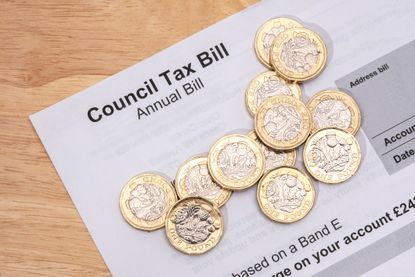How to check your council tax band
Everything you need to know on how to check your council tax band to see if you're paying the right price


In February, the Chancellor promised a £150 council tax rebate for lower band homes (A to D) for the 2022/23 tax year. If your home does not fall into this band, then we explain how to check your council tax band and challenge it if you believe you are on the wrong one.
Over 40,000 people challenged their council tax band last year, according to latest Government figures, with the result that one in three had their banding lowered. Around 70,000 more are expected to ask for a review over the next few months according to its Valuation Office Agency (VOA).
Sarah Coles, personal finance analyst at Hargreaves Lansdown, says “Anyone who falls outside Band A-D, faces the double-whammy of paying more council tax in the first place, and missing out on the £150 council tax discount so they may be tempted to check whether they’re actually in the right band”.
Here's what you need to know.
What are the council tax bands?
Council tax bands are based on the value of your home, and the higher your band, the more council tax you pay.
However the ‘value’ isn’t the sale price an estate agent would slap on it today, but based on how much your property was worth over thirty years ago.
For England and Scotland this was 1 April 1991, and in Wales it was on 1 April 2003.
Look After My Bills Newsletter
Get the best money-saving tips, tricks and deals sent straight to your inbox every week. Make sense of your money in partnership with The Money Edit.
When it comes to the actual banding system, in England and Scotland the lowest council tax band starts at ‘A’ and goes up to ‘H’. In Wales there’s one extra band going up to ‘I’, while the system in Northern Ireland is different.
The bands below are for England as the band ranges differ in Scotland.
- Band A – Up to £40,000
- Band B - Over £40,000 and up to £52,000
- Band C – Over £52,000 and up to £68,000
- Band D – Over £68,000 and up to £88,000
- Band E – Over £88,000 and up to £120,000
- Band F – Over £120,000 and up to £160,000
- Band G – Over £160,000 and up to £320,000
- Band H – Over £320,000
What council tax band am I in?
There are several ways to find out which band you’re in.
You can either check your council tax bill, ask your local authority or use the Government website.
For properties in England and Wales you can use the postcode checker on the Government website. and for homes in Scotland via the Scottish Assessors Association.
And if you’re not sure how much you pay in council tax, you can check your annual bill on your local authority website.
How to check if you are on the right council tax band
Hundreds of thousands of homes could be in the wrong council tax band, due to the rushed way valuations for council tax purposes were originally carried out.
For properties in England, go to the Government website and the Scottish Assessors Association for Scotland to check yours.
If your council tax band turns out to be different from your neighbours, and properties are of a similar size and design, so for example all terraced or semi-detached, it’s worth taking the next step.
This means working out what your property was worth back in 1991, when council tax bands were set. There’s several house price number crunching websites you can use, including Nationwide’s House Price Calculator.
Once you’ve got a rough ‘1991’ valuation, check the value back against the council tax bands to see if it’s the band you’re on. If it’s not, you may have a case.
How to challenge your local authority if you think you are on the wrong one?
If you’ve done the checks and think you’re on the wrong band, you can start the ball rolling through the Valuation Office Agency website.
It is worth knowing that it is completely free to do this, regardless of the outcome, however don’t expect a quick answer, as any decision can take up to 90 working days.
“If you’re successful, you could get a refund worth thousands of pounds”, says Sarah Coles, “as any cut is backdated to when you first moved into the property, or when the tax was introduced in 1993, whichever is the most recent”.
Are there any risks for challenging your band?
Before you start your detective work, it’s worth knowing council tax bands can go up as well as down.
“The Valuation Office Agency has the power to increase the council tax band if they think you’re paying too little, so you need to be confident you have a strong case for cutting your bill before you start”, says Sarah Coles.
However in reality, last year just 0.1% of challenges resulted in an increase to council tax bands, though of course it may not mean you facing higher bills, if the VOA decides it’s your neighbours who should pay more.

Sue Hayward is a personal finance and consumer journalist, broadcaster and author who regularly chats on TV and Radio on ways to get more power for your pound. Sue’s written for a wide range of publications including the Guardian, i Paper, Good Housekeeping, Lovemoney and My Weekly. Cats, cheese and travel are Sue’s passions away from her desk!